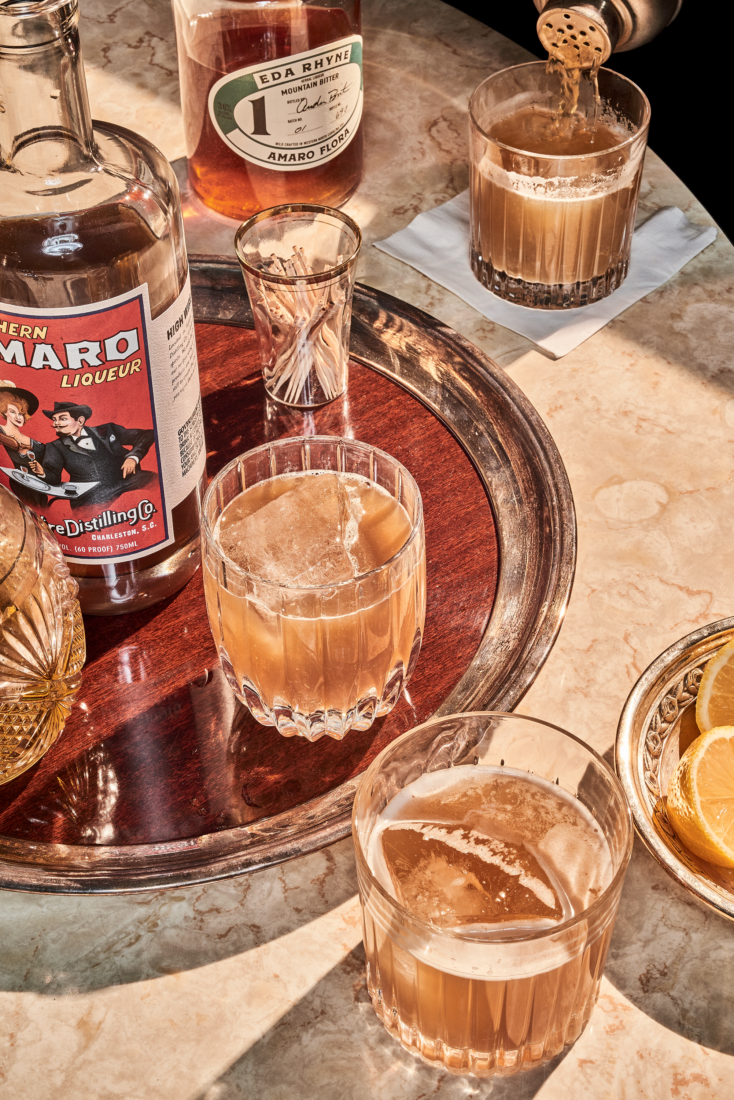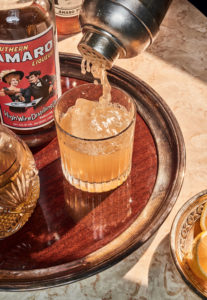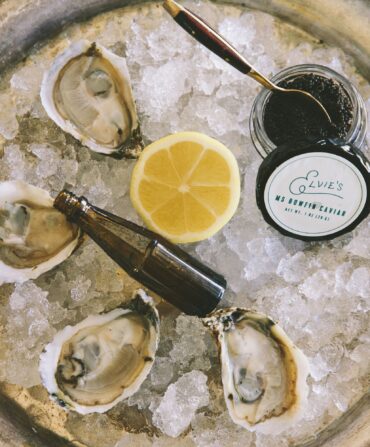Sipping a good amaro for the first time is like getting a knock on the door from unknown relations. They might come off as a bit off-putting upon first acquaintance, but after a few moments, you find they’re of good character, full of warmth and cheer. You extend an invitation for a longer stay.
Amaro is Italian for “bitter,” and the category encompasses such familiar spirits as Campari and Aperol. In Italy, amari are regional, and variations are wide-ranging—from the toasted citrus-peel and honeyed sweetness of Sicilian Averna, to the basso profundo root-beer-like notes of Amaro Lucano made in Basilicata.
Our tongues are hardwired to detect just five basic tastes—bitter, sweet, salty, sour, and umami. Bitter is the one we tend to avoid, often for good reason: It can signal that something contains poison. A couple of centuries ago, Europeans harnessed this bodily response for good, and created alcoholic drinks infused with bitter barks and roots, along with herbs, citrus peels, and spices, both as aperitifs to sip before dinner and digestifs after. The popular notion was the body would naturally speed up its digestive processes to swiftly clear out the toxins, thus building one’s appetite before dinner and preventing indigestion afterward.
Sadly, science fails to support this, but only the churlish would allow stubborn fact to topple pleasing lore. What’s beyond dispute is that American craft distillers are starting to embrace amaro, producing variations with locally obtained barks, spices, and herbs. High Wire Distilling in Charleston, South Carolina, for instance, makes what it bills as Southern Amaro, using yaupon holly and other local botanicals. In New Orleans, Roulaison Distilling Co. has released its own twist, with the Amer Herbal Rum Liqueur.
In Asheville, Chris Bower and Rett Murphy opened Eda Rhyne Distilling Co. last year to produce “regionally appropriate” liqueurs. They now bottle a fernet—essentially a category of amaro in which the bitter is turned up to eleven—along with a “forest amaro” that incorporates “wild-crafted” botanicals gathered nearby. “Everywhere you look here you find medicinal plants,” Bower says. “Our products are designed to reflect our regional style. One of the best things I heard about our amaro was from a chef in Nashville who said, ‘This tastes like the mountains.’”
Joe Stinchcomb is head bartender at Saint Leo, which restaurateur Emily Blount opened in Oxford, Mississippi, in 2016. It’s an Italian-focused neighborhood restaurant and bar, which lists a dozen amari on the reverse of its dessert menu. “People will say, ‘I don’t even know what this stuff is,’” Stinchcomb says. “You have to go through a spiel every time.” He doesn’t mind, though; explaining gives him a welcome opportunity to educate guests.
Stinchcomb created the Empire State of Mind as an on-ramp for those curious about amaro but not quite ready to sip it straight. For this cocktail, he prefers French calvados over American apple brandy for both the gentleness and sweetness. He also calls for High Wire’s Southern Amaro. “I love the black tea and clove that are in it,” he says. (If you can’t locate High Wire’s version, Stinchcomb suggests substituting the more widely available Meletti Amaro.)
His drink comes together with a deft and unexpected harmony. The amaro melds with the citrus and apple to create a flavor profile that’s at once exotic and familiar. “Apple is a good conduit for the clove and cinnamon,” Stinchcomb says, yielding a combination of fruit and spice that may bring to mind open windows and cooling pies.









